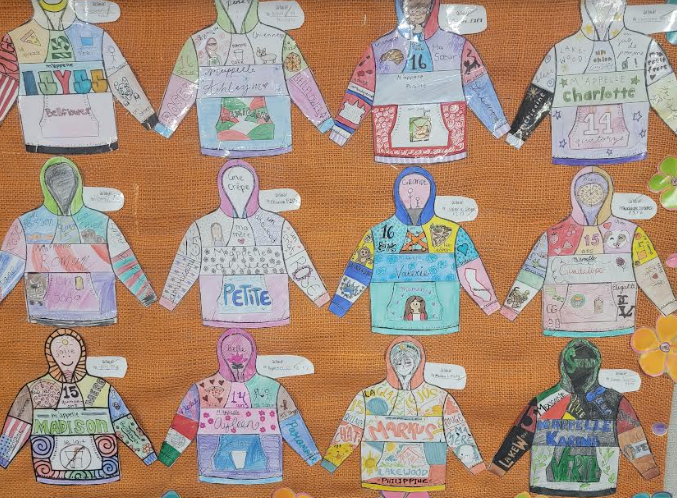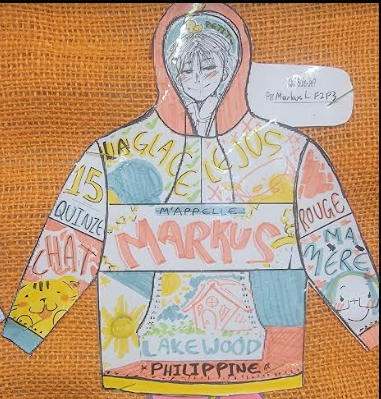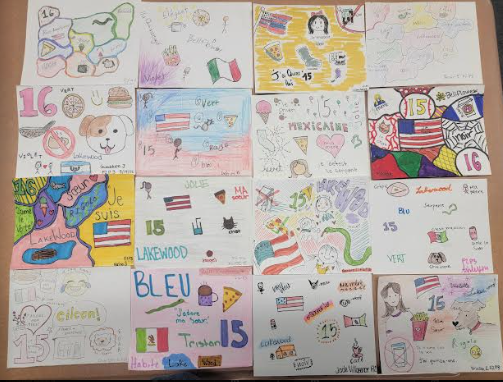This guest blog was written by Extempore Ambassador Dorah Fauben.
Post-its, sticky notes, notepads, you name it: whether hard copy or digital, we have all used many different formats to type, handwrite, or even draw out our notes. But why do we use notes? Perhaps we want to keep track of a to-do list, or perhaps we want to remember what was said, heard, or done for the purpose of communicating, like in the language classroom. As teachers, we provide input to our students, but students have to be able to retain, remember, and process this input in order to demonstrate what they learned. This is where sketchnoting comes in.
I like to instill in my students the ‘art’ of speaking through content retention starting in the novice levels. Below, I talk about some engaging activities in my classroom that promote speaking confidence and build a foundation for better presentational and interpersonal skills throughout the year and eventually for a long-term memory.
What is Sketchnoting?
Sketchnotes are “visuals created from a mix of shapes, handwriting, hand lettering, drawings, elements like lines, boxes, symbols” (Mike Rohde). It's a combination of sketching and taking notes at the same time. To be precise, no special skills are required. But it does require active listening or reading alongside summarizing and visualizing ideas by drawing and writing in a comprehensible way. Learning a target language requires great retention of vocabulary, sentence patterns, and cultural factors. The purpose of sketchnoting is to help students’ retention of this content, and I've already seen the benefits with my own students. It stimulates their creative skills and enables them to represent their thinking in multiple ways. I got hooked because I do not only use sketchnoting for retention, but also for engagement, comprehension, speaking and presentational activities.
Learning a target language requires great retention of vocabulary, sentence patterns, and cultural factors. The purpose of sketchnoting is to help students’ retention of this content, and I've already seen the benefits with my own students.
Understanding sketchnoting
Before I share a closer look at how sketchnotes fare in my teaching practice, let me share how I got into using sketchnotes. At the beginning of this school year I attended one PD session about the power of sketchnoting and SEL in the classroom. My takeaways from this specific workshop provided a simple solution for the lack of retention and a way to reinforce student speaking abilities. At this point, I realized that I had to use sketchnotes in my classes, not only for engagement but also to provide my students with the cognitive structure that will impact the brain, retention and hands-on sketchnotes activity. Another goal of sketchnoting is to instill into students the confidence needed during presentational activities, such as One Minute News.
Making it happen
Sketchnoting requires little or no prep on the part of the teacher. All that's needed is content that you can present to your students for their interpretation like...
- videos
- songs
- articles
- podcasts
Choose what works best for you and your students!
Let's look at an example. At the Novice level, I use sketchnoting to review learned concepts at the beginning of the school year and see what students have retained. In the example below, the focus was on basic information questions: ‘Qui suis-je?’ - all about me. I say the questions (ex: Comment tu t’appelles? Quelle est ta nationalité? etc/ what is your name, nationality, etc.). At this point, use the target language you teach. Students only write down key words, draw or use an element as personalized answers to the questions (PQA). By doing so, they create their sketchnotes on the clothes template (see below).
Next they can add color or other symbols. For the last step, my favorite part, I have students complete a One Minute News presentation by using their final work. At this point, students are using their sketchnotes to speak in complete sentences. They could start by first practicing with an A-B partner then, taking turns to present in front of the class. Below are samples of student sketchnotes work doing an ‘About me’ activity.


I also use sketchnoting for Gallery Walk activities. Novice level students complete an interpretive reading activity by identifying ideas connected to the main topic of the passage. They have a choice to read one passage from 3 choices. The passages that include likes, dislikes, food, basic information etc. Each student sketchnotes on an index card, then I display the index cards on a couple of desks.
Afterwards, students move from one desk-station to another and each student records on a table-form the similarities and differences they spot on the sketchnotes with reference to their chosen passage. This activity is followed by A-B partner, then a class discussion where students practice the sentence frames such as; J’ai vu un chien, il / elle aime un chien / j’ai vu une pizza, il /
elle déteste la pizza (I saw a dog, he/she likes dogs etc). I noticed that students really paid attention to this part of the activity, because they would like to know more about their peers’ feedback on their sketchnotes work. Students demonstrate content retention by using sketchnotes and actively engage in the task.

Sketchnotes and Extempore
In the example below, intermediate level students watched a video clip about school schedules in a French speaking country (La Martinique) and read an article on the same topic. Then, based on the input provided and their findings, they use sketnotes to summarize the new concepts they learned, compare and contrast student schedules in French speaking countries with their own. The follow-up on Extempore, which was an audio recording for a One Minute presentational task, was to show whether students understood what they read, watched or listened and thus acquired language.
Sketchnoting was of great help as it was a ‘road map’ for student thoughts. In this activity, the sentence frames: ‘En Martinique, l’élève la géographie est à 10h30, mais moi, j’ai le français à 10h30.’ were the main structure. While students chose to add their opinions about schedules and subjects. I could detect the confidence in their recorded presentation because of the learning process they underwent, they feel comfortable producing the language. The interpretation of the reading, audio and visual information showed each student's understanding and representation of the content. (see students’ work display below).
Student view on Extempore:

Here are a few more examples of sketchnoting that I've displayed in my classroom:

Main takeaways and areas of improvement
- Students’ speaking and retention levels are enhanced.
- Students are able to interpret context with ease and truly acquire language.
- Students have the ability to focus and keep their presentation within the time limit.
- Sketchnoting in the interpretive listening activity may be intimidating to some students and the pressure to keep up with what is heard can be challenging. I suggest you repeat a lot at first, make it a routine. The more you do it, the less anxiety students will have.
- Struggles may appear at multiple levels during sketchnoting activities. Some students may have difficulties in drawing, while others may be artistically distracted. I remind students that the goal is to present their thoughts on paper, no matter the 'quality' of the sketchnotes, as long as they can make connections and remember what it represents.
Future suggestions
With sketchnoting:
- Students remember content represented visually and in words.
- They organize their thoughts and ideas.
- They take notes in personalized and creative ways.
- They become more comfortable and confident in their language output.
What you can do:
- Start introducing, using sketchnoting as early as the Novice level.
- Introduce new content using sketchnoting.
- Increase student exposure to sketchnoting and use multiple opportunities for practice.



